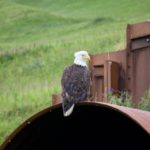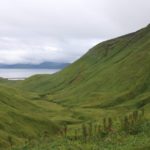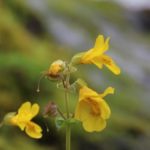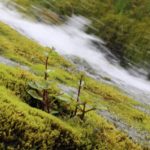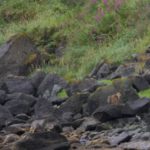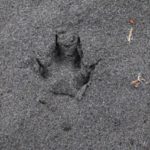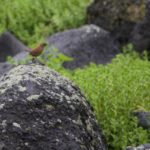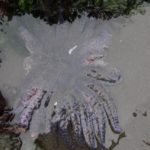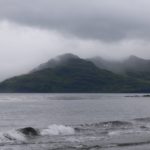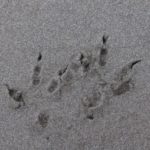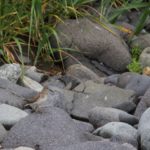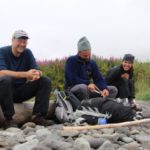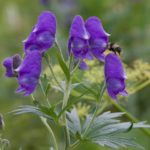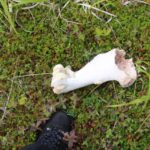2, 3 August 2016.
I am having breakfast looking out of the hotel window. About 100m from here a seaplane sits in the calm waters, waiting to be sprung into action. The seaplane is a herring spotter, used by fishermen to help them locate schools of fish while at sea. Fishing in the Aleutians needs diverse strategies.
The second of August was a relaxed day. In the morning we picked up camp and came back to Unalaska. The weather was wet and a bit windy, and the chill slowed us down a bit. When we were ready to go it was too late to attempt a long hike given the weather conditions. Instead, we decided to explore the World War II embattlements in Mount Ballyhoo. Ballyhoo lies behind Dutch Harbor. The conical mountain that we climbed the first day is also the place where the Americans hurriedly built military defenses to protect Unalaska. After the bombing of Unalaska, local people were evacuated to the mainland, and the only residents left here were soldiers, digging trenches, building bunkers, and mounting guns and cannons into the cliffs overlooking the bay of Unalaska. When the locals were evacuated by the army they were not allowed to transport more than what they could carry in a small suitcase. When they were allowed to return years later, people have lost much, their houses and churches emptied and ransacked by opportunists. Today what remains of that dark time are the abandoned war buildings that spill in all directions into the island.
In the bunkers in the cliffs of Ballyhoo, the concrete walls were covered by the graffiti of subsequent visitors. The doors were broken and fallen, or gone altogether. Cables hung from the flat roofs, and a few structures collapsed under the weight of the earth used to hide them from Japanese attacks.
In the gray and rainy day, the place had an eerie feeling to it, and we walked among the ruins in silence.
Among the cracked walls and floors, I found a very special plant: Arabidopsis kamchatica. Arabidopsis kamchatica is related to the model plant species thalecress (A. thaliana), and has a complicated family history. A. kamchatica originated through hybridization between two species, followed by one of the most significant mutations in nature: the doubling of the entire amount of DNA in their cells, a phenomenon called polyploidisation. Genome doubling, or polyploidy, has had a massive influence in the evolutionary history of plants, and it is one of the topics I study in my lab. It is the same process that produced the Scottish monkeyflower I discovered a few years ago (Mimulus peregrinus). I was glad to see a more ancient polyploid, A. kamchatica, growing in Unalaska. Labs around the world, including Diana Wolf’s in Fairbanks and Kentaro Shimizu in Zurich, have been studying this little plant for years. I hope to be able to help their research projects with our observations and collections of A. kamchatika in the Aleutians.
On the 3rd of August, we explored Peace of Mind Trail, which reaches Beaver Inlet, one cove away from Ugadaga Bay. It was a great hike. We collected Mimulus in waterfalls and lakes. When we reached the beach, an inquisitive red fox watched us from the rocks on the beach. We had lunch on a log brought to the sand by the ocean drift. A young bald eagle kept jealous watch on us, wondering why had we taken her favourite spot. In the afternoon, we met Suzi for dinner. We exchanged stories, and ate fresh seafood brought by the fishermen of Dutch Harbor.

